London Zoo, previously known as ZSL London Zoo or London Zoological Gardens and sometimes called Regent's Park Zoo, is the world's oldest scientific zoo. It was opened in London on 27 April 1828, and was originally intended to be used as a collection for scientific study. In 1831 or 1832, the animals of the Tower of London menagerie were transferred to the zoo's collection. It was opened to the public in 1847. As of December 2022, it houses a collection of 14,926 individuals, making it one of the largest collections in the United Kingdom.

The Cincinnati Zoo & Botanical Garden is the second oldest zoo in the United States, founded in 1873 and officially opening in 1875. It is located in the Avondale neighborhood of Cincinnati, Ohio. It originally began with 64.5 acres (26.1 ha) in the middle of the city, but has spread into the neighboring blocks and several reserves in Cincinnati's outer suburbs. It was appointed as a National Historic Landmark in 1987.

The San Diego Zoo is a zoo in San Diego, California, located in Balboa Park. It began with a collection of animals left over from the 1915 Panama–California Exposition that were brought together by its founder, Dr. Harry M. Wegeforth. The zoo was a pioneer in the concept of open-air, cage-less exhibits that recreate natural animal habitats.

The Philadelphia Zoo is a zoo located in the Centennial District of Philadelphia on the west bank of the Schuylkill River. It was the first true zoo in the United States; it was chartered by the Commonwealth of Pennsylvania on March 21, 1859, but its opening was delayed by the Civil War until July 1, 1874. The zoo opened with 1,000 animals and an admission price of 25 cents. For a brief time, the zoo also housed animals brought to U.S. from safaris by the Smithsonian Institution, which had not yet built its National Zoo.

Omaha's Henry Doorly Zoo and Aquarium is a zoo in Omaha, Nebraska. It is accredited by the Association of Zoos and Aquariums and a member of the World Association of Zoos and Aquariums. In August 2014, TripAdvisor rated it the "world's best zoo", ahead of the San Diego Zoo and Loro Parque, based on an algorithmic assimilation of millions of reviews for 275 major zoos worldwide.
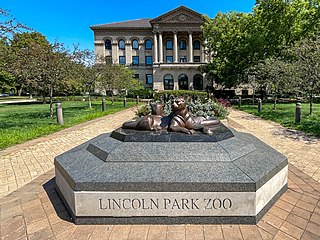
Lincoln Park Zoo, also known as Lincoln Park Zoological Gardens, is a 35-acre (14 ha) zoo in Lincoln Park, Chicago, Illinois. The zoo was founded in 1868 and is the second oldest zoo in the United States. It is also one of a small number of zoos to offer free admission. The zoo is an accredited member of the Association of Zoos and Aquariums (AZA). In 2019 it also became an accredited arboretum.
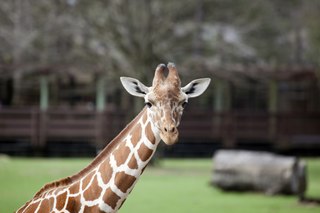
Montgomery Zoo is a 40-acre (16 ha) zoo located on the north side of Montgomery, Alabama. The zoo is an independent city department, and is supported in part by The Montgomery Area Zoological Society. It is home to approximately 750 animals representing 140 species. After not renewing their Association of Zoos and Aquariums membership in 2013, the zoo opted to remain accredited solely by the Zoological Association of America. The Mann Wildlife Learning Museum opened in January 2003 and serves as the administration building. The museum features taxidermy displays with a focus on native wildlife, game species, and wildlife management.

Chester Zoo is a zoo in Upton-by-Chester, Cheshire, England. Chester Zoo was opened in 1931 by George Mottershead and his family. The zoo is one of the UK's largest zoos at 51 hectares and the zoo has a total land holding of approximately 160 hectares.

Audubon Zoo is an American zoo located in New Orleans, Louisiana. It is part of the Audubon Nature Institute which also manages Audubon Aquarium, Audubon Louisiana Nature Center, Freeport-McMoran Species Survival Center, Audubon Park, and Audubon Coastal Wildlife Network. It covers 58 acres (23 ha) and is home to over 2,000 animals. It is located in a section of Audubon Park in Uptown New Orleans, on the Mississippi River side of Magazine Street. The zoo and park are named in honor of artist and naturalist John James Audubon who lived in New Orleans starting in 1821.

The Mesker Park Zoo and Botanic Garden is a zoo that opened in 1928 in Evansville, Indiana, United States. It is located in Mesker Park on Evansville's northwest side and is run by the City of Evansville.
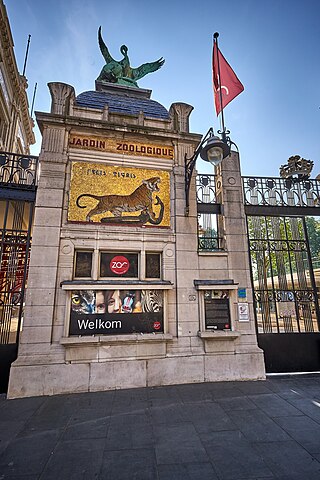
Antwerp Zoo is a zoo in the centre of Antwerp, Belgium, located next to the Antwerpen-Centraal railway station. It is the oldest animal park in the country, and one of the oldest in the world, established on 21 July 1843.
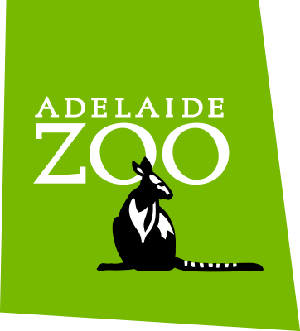
Adelaide Zoo is a zoo in Adelaide, Australia. It is the country's second oldest zoo opening in 1883, and is operated on a non-profit basis. It is located in the parklands just north of the city centre of Adelaide, South Australia. It is administered by the Royal Zoological Society of South Australia Incorporated, which is a full institutional member of the Zoo and Aquarium Association and the World Association of Zoos and Aquariums, and which also administers the Monarto Safari Park near Murray Bridge.

Wilhelma is a zoological-botanical garden in Stuttgart, southern Germany, located in the Bad Cannstatt district in the north of the city on the grounds of a historic castle. Wilhelma Zoo is one of the most popular tourist destinations in Baden-Württemberg, seeing more than 2 million visitors annually.

The Aktiengesellschaft Cologne Zoological Garden is the zoo of Cologne, Germany. Being the third oldest zoo in Germany, it features over 10,000 animals of more than 850 species on more than 20 hectares. The internationally renowned zoo with an attached aquarium and invertebrate exhibit is active in preservational breeding of animals that are in danger of becoming extinct. In addition, in-the-wild conservation efforts and research focussing on animals of Madagascar, Wallacea, and Vietnam are actively promoted and supported via cooperation with Cologne University and local projects, such as in the case of Przewalski's horses.

Denver Zoo Conservation Alliance is an 80-acre (32 ha) nonprofit zoological garden and conservation organization located in City Park of Denver, Colorado, United States. Founded in 1896, it is operated by the Denver Zoological Foundation and funded in part by the Scientific and Cultural Facilities District (SCFD). Its other sources of funding are ticket sales and private donations. It is the most visited paid attraction in Denver.

The Washington Park Zoo is a zoo located in Washington Park, Michigan City, Indiana, which covers 15 acres (61,000 m2) on a hilly sand dune close to the southeastern tip of Lake Michigan. The park and zoo were listed in the National Register of Historic Places in 1991.

Metro Richmond Zoo is a privately owned, for-profit zoo in Chesterfield County, Virginia. It is located in the central Virginia area, off of U.S. Route 360, about 20 miles southwest of Richmond. Metro Richmond Zoo encompasses about 70 acres (28 ha) and houses around 2,000 animals representing over 190 species, including reticulated giraffe, white rhinoceros, snow leopard, cheetah and Grant's zebra.
Heritage Village Museum is a recreated 1800s community in Southwestern Ohio, in the United States. The village contains 13 historic buildings from around the Cincinnati area; they were moved here to save them from destruction. The village is located within Sharon Woods Park in Sharonville, Ohio.
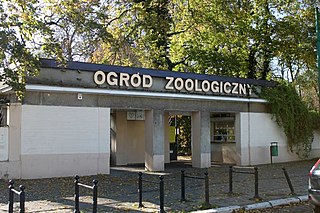
The Poznań Old Zoo is one of the oldest zoological gardens in Poland, located in the city of Poznań, Greater Poland Voivodeship. It was founded in 1874 and was included on the register of objects of cultural heritage in 1978 as a unique example of a vivarium. The zoo started as a few animals kept by a restaurant owner in the early 1870s. It can thus be considered the oldest continuously operating Polish zoological garden. Together with the New Zoo in Poznań, which opened in 1974, it forms an integral part of the whole complex known as The Zoological Garden in Poznań.
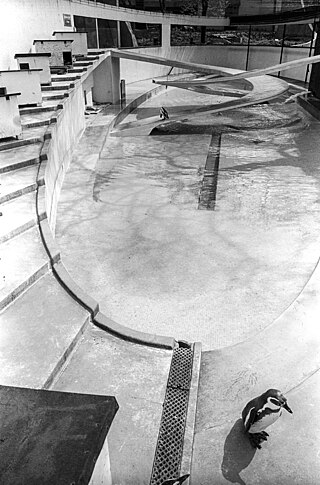
The Penguin Pool at London Zoo, Regent's Park is a penguin enclosure designed in the International Modernist style by Berthold Lubetkin and the Tecton Group. Constructed in 1934, Historic England describe it as "a key symbol of British Modern Movement architecture". The pool housed the zoo's collection of penguins for 70 years. Changing attitudes to keeping animals in captivity, and concerns regarding the suitability of the structure for penguin well-being, saw the pool's closure in 2004 and its subsequent replacement by Penguin Beach. After a period of non-use, during which Lubetkin's daughter called for the structure to be "blown to smithereens", the pool was converted into a water feature. It is a Grade I listed building.























